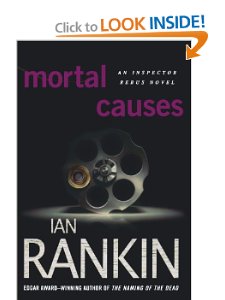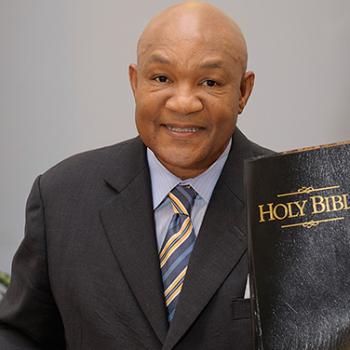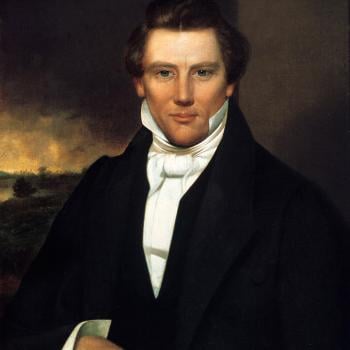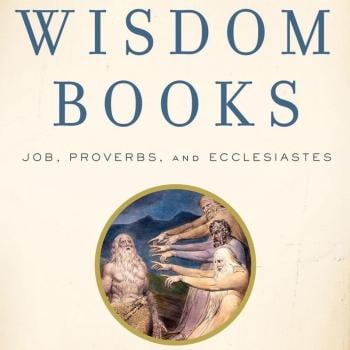‘Getting mortal’— it’s an interesting phrase, and it recurs at various junctures in Ian Rankin’s sixth John Rebus crime novel— Mortal Causes. What it seems to mean is getting inebriated, inebriated enough that one loses one’s inhibitions and the true self, the self below the facade, below the surface of the skin is revealed. Getting mortal then is in one sense, going the way of all flesh. In another sense its undressing one’s real desires and thoughts in public. It’s an apt phrase, and Rankin is full of them. For example, check out this phrase from p. 314— “[he] was sitting in his chair, prevented from moving by a sudden case of death.” Rankin makes some other crime novelists look like rank amateurs when it comes to style and substance, and pizzazz.
Having said that, ‘Mortal Causes’ is not the best of the first six novels in this series. In a sense it is a continuation of novel 5, because it continues to deal with Big Ger Cafferty and his various permutations and machinations. Here is the Amazon summary of the plot…
“In Edinburgh you’re never far from a peaceful spot, or from a hellish one either. Now, in the heart of summer, in the midst of a nationalist festival, Inspector John Rebus is on the murder case of a young man left hanging in a spot where his screams would never be heard. To find the victim’s identity–and his killer–Rebus searches from Edinburgh’s most violent neighborhood to Belfast, Northern Ireland–amongst petty thugs, gunrunners, and heavyweight criminals. But before Rebus can get to the truth, he’s bloodied by the dream of society’s madmen–and staring into the glint of a killer’s eyes.”
This novel is more somber, less playful, with less humor than some in the series, and I have one complaint— namely why would you set the novel during the famous Edinburgh Festival and Tatoo and fireworks, and not tell us more about the Festival itself when you obviously know a lot about it? Contrast what happens in this novel with the classic Ellis Peters tale St. Peter’s Fair, where the action doesn’t just happen behind the scenes of the fair, the fair becomes the scene of the action at various points so the author can describe for us the fair itself. This was a missed opportunity in this novel, which is nonetheless a good one.
This novel does however reveal Rebus’ mortality, vulnerability. He is still nursing along his relationship with Dr. Patience Aitken, but in a moment of stupidity and hormonal overload, he does the tango with a local female lawyer— Caroline Rattray (emphasis on the last syllable please, unless you want to fall into a rattrap). The man is not perfect, indeed he regularly uses the phrase ‘justified sinner’ but the good news is, he knows immediately he should never have done the beast with two backs with someone he isn’t committed to. The man does have a conscience… much of the time a guilty one which he attributes in part to being John Knoxian sort of Calvinist.
One of the notable trends in this series, is that the novels have gradually been getting longer (this one is 320 pages in the paperback edition which I read). They are still quite easy to read and the pace is breezy if not brisk at times, though this one lacks the breathtaking windup of Tooth and Nails. The characters are mostly new in this one because Rebus is temporarily on loan to the Scottish Crime Service unit that deals with terrorist activity, which brings me to the most interesting aspect of the novel.
This novel deals with ‘the troubles’, the troubles between Catholics and Protestants, and how Scots and Scotland get dragged into it, not least because there were plenty of Scots who were moved to northern Ireland, William of Orange men, men like their descent Ian Paisley, pugnacious to the last. Americans tend to know about the IRA, but interestingly they know little about the Protestant terrorists– the Ulster boys who produce ulcers. The UVF for example. And Rankin does not spare the horses in his criticism of the support of these violent men by Americans, Canadians etc. of Scottish Protestant descent. What I would want to say is that the ‘troubles’ have little to do with actual Christianity. It’s after all, not a dispute about Christology, for example. It has to do with history, heritage, and hate. It has to do with ethnic animosity and ethnic cleansing. In short, it has nothing to do with the religion Jesus proclaiming and his followers set up, for that religion was all about being cross bearers and lovers of enemies, not about being cross wearers and totters of guns. In other words, both sides in this fight are behaving entirely like heathens, not Christians at all.
John Rebus is a wonderful creation— warts, wrinkles and all, and in the next volume in the series, we will discover more about his penchant and that of Rankin’s as well for the Rolling Stones. It is called—-wait for it ‘Let it Bleed’.
















